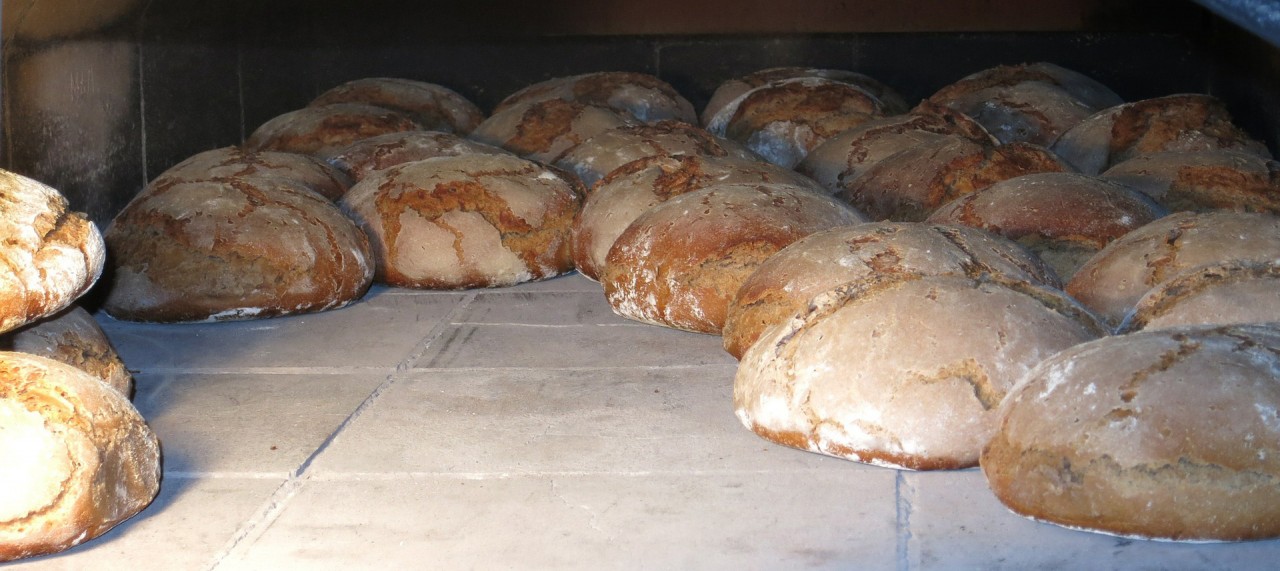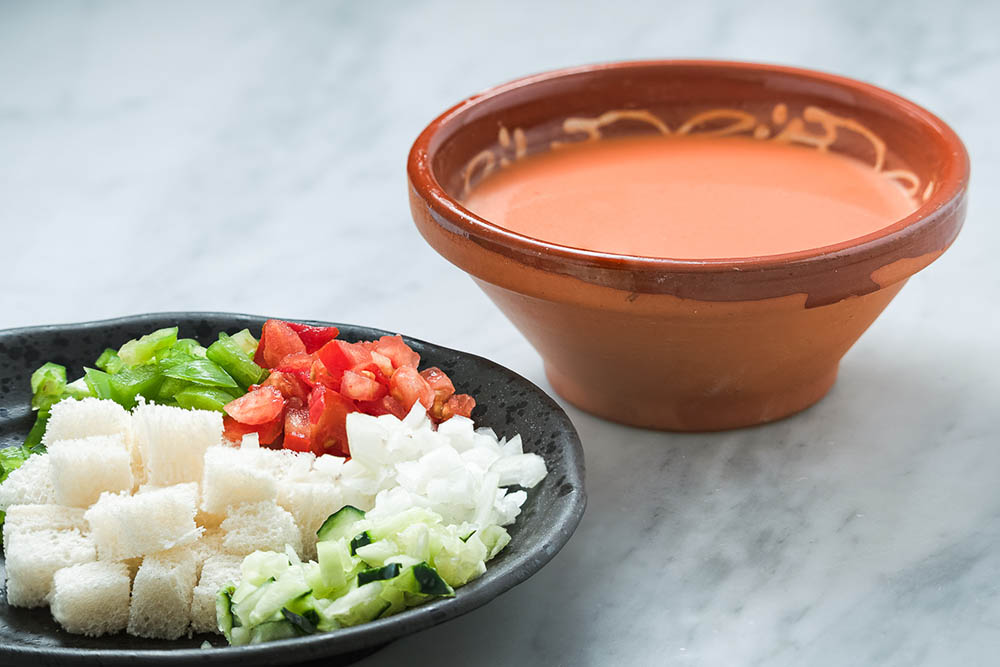My Spanish Breakfast
Monday, May 31, 2021
 For those of you who have been to Spain you've probably seen or tried this dish but for those of you who haven't, it's your lucky day, because tasty food doesn't get any easier. Well, more than a dish it is a fantastic “breakfast” alternative or a starter, side dish for a meal or even a main meal which can be accompanied with cheeses and salads. For those of you who have been to Spain you've probably seen or tried this dish but for those of you who haven't, it's your lucky day, because tasty food doesn't get any easier. Well, more than a dish it is a fantastic “breakfast” alternative or a starter, side dish for a meal or even a main meal which can be accompanied with cheeses and salads.
Like all great dishes, simplicity rules and here is no exception. “Pan Catalana” or “pa amb tomàquet” as they would say in Catalan is pretty much part of the Catalan’s staple diet.
This recipe is considered one of the best examples that define the Mediterranean diet and has spread all over Spain as a traditional recipe.
The only ingredients you need are thick-sliced country bread, a clove of garlic, “GOOD” Extra Virgin Olive Oil. I personally prefer to use a very “green” fruity olive oil with fresh grass notes, such as that from the Hojiblanca variety or a blended Picual, “Venta del Varon” is ideal for this, as this dish relies on so few ingredients I like to be able to noticeably savour all of them in every bite! However, any good extra virgin will do. You will also need a little salt and Iberian bellota ham (Spanish cured acorn ham).
It is a favourite with all my family and all the visitors that come to stay. Funnily enough, many end up eating so much of it before the main meal that they don’t make it to halfway through the main course let alone to the dessert! It is rather moreish, so be careful!
Naturally, as with all recipes that spread, every area of Spain prepares it in a slightly different way. For example in Majorca, Catalan Bread or “Tomato Bread” is prepared with tomatoes called Tomatiga de Ramillet, which is a specific variety of tomato on the vine, which is smaller and with a little bit more of an intense and bitter taste than normal tomatoes, it is also a tomato that has a longer maturing period, meaning a longer shelf life of up to  several months. The important thing here is that the tomato should be very ripe, making it easier to rub the pulp onto the bread. The original base used to be and still is made (in Catalunya) with toasted slices of “pa de pages” ('peasants' bread'), a typical round piece of wheat bread of a fair size (from ½ kg to 5 kg, from some 20 cm to 50 cm in diameter) Nowadays many make a pre-mixture of grated tomato, olive oil and salt and then just spread it on to the toasted garlic bread and top it with a couple of slices of Iberian Bellota Ham, which is much easier if you are serving a large table and especially if you like a lot of tomato on your bread. several months. The important thing here is that the tomato should be very ripe, making it easier to rub the pulp onto the bread. The original base used to be and still is made (in Catalunya) with toasted slices of “pa de pages” ('peasants' bread'), a typical round piece of wheat bread of a fair size (from ½ kg to 5 kg, from some 20 cm to 50 cm in diameter) Nowadays many make a pre-mixture of grated tomato, olive oil and salt and then just spread it on to the toasted garlic bread and top it with a couple of slices of Iberian Bellota Ham, which is much easier if you are serving a large table and especially if you like a lot of tomato on your bread.
However, if the mixture is not pre-made, there is said to be an “ideal order” in which the ingredients are integrated to yield the best flavour. First, the garlic is rubbed on the bread. Then the same is done with the tomato. Next comes the salt, and lastly the olive oil. The traditional way to get all the flavours mixed well without having to pre-make a mixture is to cut off the heel of the loaf and use it to gently but firmly press all of the ingredients together.

So, how do I make it? I personally like a fair amount of tomato on my bread so I tend to grate a couple of mature ripe tomatoes into a bowl (cut the tomatoes along their horizontal axis, not vertically), I sometimes use plum tomatoes which work very well indeed. I thickly slice a country loaf of bread, one with a crunchy crust, about a thickly as the toaster will allow me to and toast them. I then grab a clove of garlic and cut the top off it and then without taking the skin off, rub the garlic over the toasted bread. I then change the “ideal order” and pour the extra virgin olive oil on next, as I find it tends to slide off the tomato if you put it on last, then I add a little salt, as it is easier to control how much salt you put on, without the tomato, then I spoon on the grated tomato pulp and spread it evenly over the bread. Finally, I top it with a couple of thin slices of Iberian Bellota Ham and that’s it. Done. Ready to eat and enjoy, with a glass of Ribera del Duero red wine or even a coffee and freshly squeezed orange juice at breakfast. Fantastic!

 2
Like
Published at 11:25 PM Comments (5)
2
Like
Published at 11:25 PM Comments (5)
Gazpacho Andaluz - the heat is getting closer
Monday, May 10, 2021

Gazpacho is one of the most international dishes of Spanish gastronomy. Refreshing, low in calories and very easy to make. It is one of the star dishes of the summer, which, accompanied by a bit of crusty bread and a delicious dessert, will provide a solution to many of our meals this coming summer.
Making gazpacho, in principle, is quite a simple task, but like everything else, it has its tricks and you will eventually tweak it to your liking the more your make it.
The most popular version of the recipe for this cold soup is tomato, pepper, onion, garlic, cucumber, bread, and oil. Despite the fact that many think that gazpacho is originally from Andalusia, it has been proven that previous recipes already existed. However, there is no doubt that this one is the most famous version of them all. Most versions of this recipe will vary depending on the amounts of vegetables you used, which is why there are so many different flavours, everyone has different tastes - some prefer more garlic, some less, some more cucumber, some less, in the end, it's really up to you! But as a starting point this is what you need:
Ingredients
800 grams of ripe tomato
1 onion
2 cloves of garlic
1 green pepper
1 red bell pepper
Spanish half cucumber
150 grams of stale bread
1 teaspoon of sweet paprika
1 tablespoon cumin mocha
Salt
1 glass of extra virgin olive oil
1/3 of a glass of sherry vinegar
Water
Steps to take:
Wash all the vegetables well, cut them into medium-sized pieces and put it all in a bowl. Add half of the oil, the vinegar, the salt, the paprika, the cumin and a little water and leave it to marinate in the refrigerator.
After a few hours of marinating, take the vegetables out of the fridge, blend them with a mixer and pass the mixture through a sieve. Then, use the blender again and while blending, add the rest of the oil little by little and ... that's it! All you have to do now is to season with salt and add a little extra vinegar if you prefer more of a kick. You can decorate the gazpacho with some chopped cucumber, peppers and toasted croutons.
As you can see, making gazpacho is really very simple. Adapt the recipe as you see fit and start experimenting! One piece of advice - try and find the best quality ingredients possible - especially the tomatoes, and you can't go wrong. Shorty I will publish a few variations of gazpacho so you never get bored!
 1
Like
Published at 10:10 PM Comments (1)
1
Like
Published at 10:10 PM Comments (1)
Spam post or Abuse? Please let us know
|
|